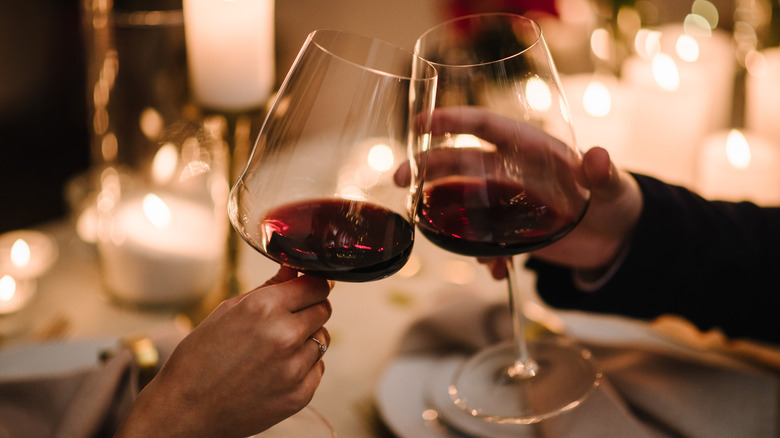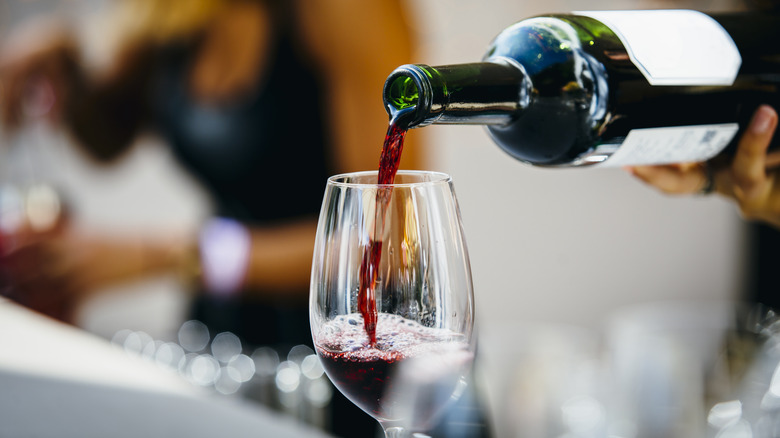Here's Why Cheap Wine Is So Expensive On Restaurant Menus
You look over a restaurant's drinks menu, and you spot a wine you've bought before for about $10 or less at Trader Joe's. You check the price of this usually inexpensive wine, and you notice that the restaurant has marked up the bottle to at least three times what it normally costs. As restaurants have several techniques to encourage customers to spend, it seems like greed for fancy places to triple the price. Given how immediate post-pandemic practices of hiking food and liquor prices have seemingly become the norm, with the USDA predicting that food costs will continue to rise, it's unlikely that restaurants will slash wine prices any time soon.
There are a couple of reasons why a cheap wine is ridiculously pricey at a restaurant. Food and wine prices are determined by the restaurant's operating costs, which include salaries for kitchen staff, waitstaff, front-of-house, and everyone else behind the scenes. Toss in the expenses for the establishment's rent, furniture, glassware, linens, and cutlery, and it's a challenge for any restaurant — even the busy ones –to make a profit. As patrons, we are paying extra just to keep the restaurant in business. This all makes sense economically, but the other factor playing into the pricing game is that many people enjoy wine with a meal, and restaurants know they can charge whatever they like without anybody complaining.
How to avoid paying too much for wine at a restaurant
You'll suffer the most egregious price-gouging by ordering wine by the glass. A general rule of thumb is that if a bottle of wine costs $15 when a restaurant purchases it through the distributor, the place will charge $15 for each glass poured. A standard pour for a glass of wine is five ounces, which comes to five glasses per bottle, so a single bottle can make a huge profit for the restaurant. An establishment could also pour a chintzy four ounces of wine, thus stretching out the bottle to six glasses, and get even more profit.
It all seems unscrupulous, but restaurant managers claim that opening a bottle of wine leads to potential waste, because if it isn't poured in 24 hours, it needs to be dumped out. Most states allow an opened bottle of wine to be brought home, so even though the bottle you order is more than you'd pay for outside a restaurant, you'll save more money by ordering a bottle instead of a couple of glasses.
Restaurants will also upcharge popular varieties, like cabernets or chardonnays, so ignore the sommelier's suggested wines and look for a better bargain by trying less familiar wines from different regions or countries. You can often find half-price wines at Happy Hours, and another cost-saving tip is to check out a restaurant's corkage fee for bringing your own bottle of wine, which can set you back for only $15 to $20.

